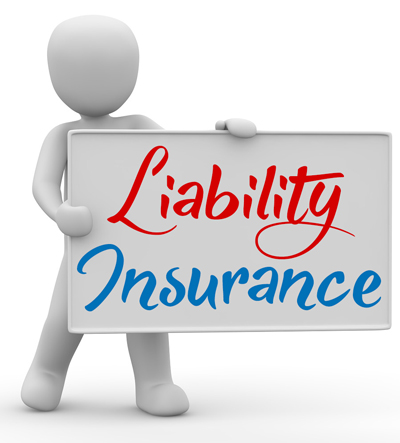This is Part 13 from 125 Building Blocks for Your Bakery Business

This chapter includes a list of action items you need to complete in order to launch a legal food business in the U.S. Countries outside the U.S. may have different requirements.
Register Your Business Name
Follow the steps required to register your business name in your area. The application process in your city or town may be referred to as a “Doing Business As” or “Fictitious Business Name” listing. This process usually entails taking a trip to city hall, filling out a form, paying a fee, and buying an advertisement that announces your business in a local paper (this makes it “official”). You will need to verify that you are not filing a business name that already exists. Your city or town probably has an online database where you can check your name against the entire registry of listings.
Obtain Food Safety Certification
I cannot stress enough how important food safety education is for all sellers and makers of food. Food safety is a matter of public health. Please do not endanger consumers by skipping this critical step. I promise this is worth the trouble!
ServeSafe is a widely recognized food handling education program. You can also educate yourself for free by reading the following guide from the FDA: Managing Food Safety, however note that won’t earn you the type of certification needed to obtain a health permit.
Liability Insurance

Liability insurance is a requirement for food businesses. Most states require that you obtain a one- or two-million dollar coverage policy, which will cost you somewhere in the neighborhood of $500 per year. You can buy this type of insurance at your local State Farm agent or equivalent provider.
Health Permits

In order to operate a legal food business, you will need to obtain a permit to do so from your local health department. This typically involves paying a sizable fee, submitting documents that prove you’ve registered your business, taking a course in safe food handling, and yielding to a kitchen inspection. This is a tedious process but it is a necessary one.
Commercial Space
Five options available to food businesses
- Running a home business under cottage law
- Renting space and time in a commercial kitchen that is dedicated to renters
- Subleasing space and time in a rented or owned commercial kitchen
- Renting your own commercial establishment
- Owning your own commercial establishment
Many bakers start out operating in a small space then work their way up to ownership as their business grows. Let’s begin with the simplest, cheapest option: the home.
Begin in Your Home
Depending on where you live in the U.S., you may have access to cottage law, which allows bakers to manufacture food in the home. You can find out all about the specifications within your state on Forrager.com. Cottage law requirements differ from place to place. In many cases, there are restrictions on the types of food you are allowed to manufacture out of your home. You will need to research how to remain in compliance with the cottage law in your area.
Food Safety Compliance
Food safety should be a top priority if you are selling food to the public. Pets and children are not allowed in your home kitchen while you are working. Food must be arranged in the proper order on the shelves of your refrigerator. For some basics, I recommend this article: How Not to Serve Crap.
Kitchen & Storage Space
Ideally if you are working out of your home, you have a separate production space to run your business. That means separate refrigerator and freezer. Not only will this allow you to avoid contamination of flavors (spicy, savory food does not mix well with cake) but it will also help maintain proper temperature control. In the home, family members tend to open the fridge and stare into it when they’re bored or hungry or curious about what’s inside of it. Staring into the fridge throughout the day lets the cold air out, which raises the internal temperature of the fridge, which can put the food into the danger zone. This is just one example of how working from home puts your equipment and ingredients at risk. Maintaining separate equipment for your bakery operation helps avoid this type of problem.
Upgrade to a Licensed Commercial Kitchen
If you don’t have cottage law in your state then you will have to begin by renting space in a licensed commercial kitchen. There are two options here: rent per hour and subleasing.
Rent Per Hour
Some commercial kitchens are designed for people who own small businesses and are looking to grow. This is considered a shared space since many different businesses take turns using it.
Pros of this option
- You can list a business address that is not your home.
- You will have a place to meet with clients that is not your home.
- You will have access to commercial grade equipment, refrigeration, and storage.
- You can sign up for the time slots that you want, provided they are available.
Cons of this option
- Renting on an hourly basis is expensive and can be stressful as you will have limited time.
- You will have no control over what other foods are cooked and stored in that facility.
- It’s more difficult to avoid potential allergens.
- Tastes/smells of other foods made by other vendors may mingle with your desserts.
- With so many other companies coming and going, it is not necessarily a secure or private space.
Subleasing
An alternative to rent-per-hour is to strike up an agreement with the manager of an existing commercial kitchen to sublease their space. Most food businesses have off hours when they are not using their workspace. You could potentially be using it at those times.
Try to avoid sharing space with a competing business like a similar type of bakery. A better bet is to work in a bread kitchen since all the equipment is the same but there is no competition in terms of product lines.
You may find offers for this type of arrangement on Craigslist. Another option is to look around in your area, walk into food establishments (during slow days and off hours) and ask owners if they have room for you. Businesses that are struggling to pay their overhead costs may be amenable to this arrangement.
You will need to negotiate a fair rate and establish guidelines that work for your schedule and needs. Good diplomacy skills will be required on an ongoing basis as you cooperate over use of the space.
Pros of this option
- You can negotiate a flat monthly rate, taking the pressure off an hourly rate schedule.
- You will have access to commercial grade equipment and refrigeration.
- When buying ingredients & supplies from distributors, you can potentially combine orders with the other business to meet the minimum delivery requirements.
- The location might have an area dedicated to customers, where you can meet with your clients.
- The location might have a more prominent storefront, making it easier for your clients to find.
- It’s a decent temporary option as you grow your business into something large enough that warrants its own commercial space.
Cons of this option
- The hours may be less desirable (middle of the night, for instance).
- You will never have priority access to the kitchen space.
- You will always have to work around the owner’s schedule.
Wait to Rent or Own
Unless you have significant upfront capital to spend, I don’t recommend diving into renting or owning a space if you are a new bakery business. It takes time to build up a client list. You are better off starting at farmer’s markets or working under cottage law, building up momentum for your business before you venture into a commercial kitchen of your own.
This is the end of Part 13 from 125 Building Blocks for Your Bakery Business. Return to the Table of Contents or proceed to Part 14 – Bakery Production Efficiency

Related Material






